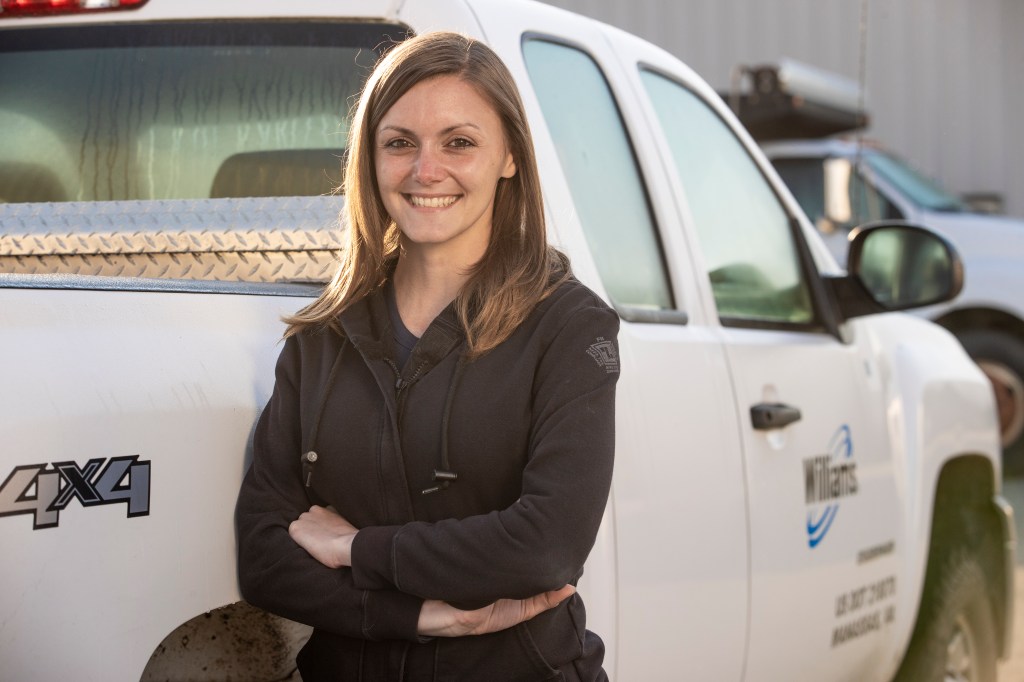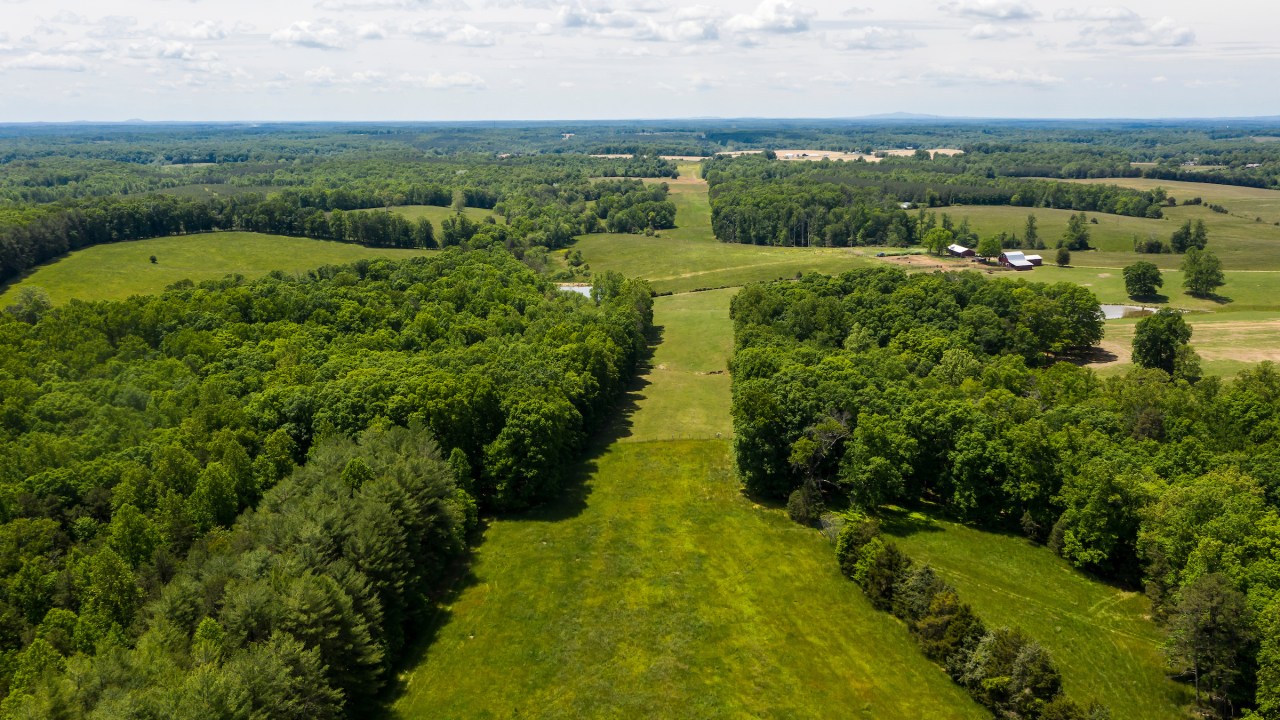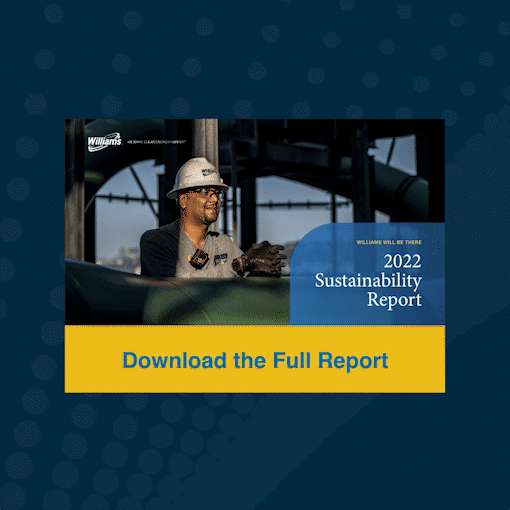Why This Matters to Williams
Williams’ business depends on our ability to maintain trusting and collaborative relationships with our stakeholders. Retaining the confidence and approval of community members, public leaders, non-governmental organizations and government officials allows us to continue our operations and expand our infrastructure. In addition, engaging with the public strengthens our understanding of how new and existing projects will impact the health, safety and economic development of our communities. Ultimately, we use the feedback received from stakeholders to improve our strategy and operations. Williams strives to serve as a good neighbor, retain support for our operations and promote the success of our expansion projects. We actively engage with communities, customers, suppliers, non–governmental organizations, industry associations and government officials to understand different perspectives and explore collaborative outcomes built on open communication.
Williams defines stakeholder engagement as activities specifically conducted to inform and gain input from parties about Williams’ expansion projects, operational activities or other notable business activities. We work to identify the best engagement approach for each unique stakeholder group. As part of our materiality assessment and report preparation process, we identify our primary stakeholder groups and directly engage with external stakeholders to understand their primary topics of interest. In addition to engaging stakeholders as part of our materiality assessment, we promote consistent stakeholder engagement on ESG topics.

Community Engagement
Williams focuses on open dialogue and proactive partnerships with community members. In 2022, we participated in more than 200 unique engagements with local community stakeholders, including three community events, four open houses, 38 meetings with business organizations and chambers of commerce, nine environmental justice meetings and 10 meetings with non–profit organizations.
Executive oversight of community engagement is the responsibility of our Vice President of Communications and Corporate Social Responsibility, and our Vice President of Government Affairs and Public Outreach. In the communities where Williams has expansion projects, we employ specialized consulting services to develop distinct outreach and stakeholder engagement plans to help us better engage with distinct community members and groups.
Williams’ community and project outreach team is the central contact point for stakeholder engagement related to pipeline infrastructure projects. The team develops a public participation plan for each of our major projects. When implementing these plans, we use a Public Outreach Strategy Guide that formally outlines Williams’ approach to community engagement and consultation. The guide emphasizes the importance of early contact, continual communication and flexibility throughout the lifecycle of our projects.
Williams uses a stakeholder management database to identify relevant stakeholders in communities associated with proposed and active expansion projects. We use this database to develop stakeholder lists required by FERC and as a resource to locate stakeholders in areas of existing operations. In 2022, Williams deployed the stakeholder database for our Southeast Energy Connector project, sending letters to stakeholders informing them about the project and community open houses.
We actively identify and engage with marginalized communities that may be affected by our operations. As part of this approach, in 2022, we further refined our methodology to evaluate the social demographics and the presence of overburdened populations in our operational footprint. This has improved our efforts to assess potential environmental justice risks and has become an important factor in project execution decisions. For more information on these efforts, see Environmental Justice.
To receive concerns related to our operations, we provide a dedicated email address and a toll-free stakeholder hotline as methods of contact on project materials, company handouts, letters to stakeholders and project-specific web pages. We assess the effectiveness of our engagement by monitoring the number of complaints, concerns and issues raised by community members, elected officials and regulating agencies. We work diligently to assess and respond to all community concerns.

Upholding Regulatory Requirements
Williams continues to follow regulatory requirements for notifying and managing interactions with stakeholders using our stakeholder management systems. Williams employs the Federal Energy Regulatory Commission’s (FERC) voluntary pre-filing process to engage affected stakeholders before the submittal of a formal project certificate application. Our activities include public meetings and consultations with elected officials, community leaders and affected landowners.
Following the FERC pre-filing process, Williams holds a series of open houses to inform landowners and other stakeholders about the scope and need for the proposed project. When hosting open houses, the company seeks ways to meet public preferences and not discourage any community members from participating in the process. As an example, Williams held one in-person and one virtual open house in 2022 for the Southeast Energy Connector project. We scheduled virtual open houses to align with the dates of in-person events. During the open houses, Williams provided a project overview and online, interactive maps, which allowed attendees the opportunity to submit comments regarding the project directly onto the maps.
Landowner Relations
As natural gas demand grows, we must periodically expand existing facilities or build new assets across our energy infrastructure systems that span 25 states. Our ability to reliably supply energy is, in part, due to the strong, long-term collaborations we have with more than 115,000 landowners. We strive to foster successful relationships with landowners who grant us the privilege of establishing permanent easements across private land.
For proposed pipeline infrastructure projects, we apply a standardized approach to engaging affected landowners. We focus on early engagement to allow us time to explain the project, obtain permission to survey the land and conduct a formal negotiation process. We encourage landowners to ask questions, voice concerns and communicate their preferences so we can create mutually beneficial solutions.
Throughout the project planning process, Williams proactively circulates relevant project information to landowners, including company policies, frequently asked questions and steps for acquiring a right-of-way. For projects certified by the FERC, Williams must notify landowners up to half a mile from new compression facilities and all landowners affected by the proposed pipeline route. We distribute a brochure developed by the FERC that describes what to expect if a proposed project runs through a landowner’s property. In 2022, we distributed 104 mailers to landowners for the FERC pre-filing process.
We treat landowners fairly by providing them with reasonable financial compensation, protecting and restoring their land and respectfully operating on their property. Williams directly and regularly engages with our landowner partners through email, phone calls, mailings, open houses, in-person meetings and other forms of communication.
We provide training to our land agents to abide by INGAA’s Commitment to Landowners, a set of recommended behaviors that member companies agree to follow when engaging landowners. We also adhere to applicable state regulations such as the Texas Landowner Bill of Rights.
Williams aims to reduce the impacts our infrastructure has on communities by attempting to site the pipeline routes along existing rights-of-way, roadways or other utility corridors. We try to reroute, when possible, to avoid property owners who do not want to work with us. For existing partnerships, we conduct an annual checkup of our assets on landowner properties to confirm that our infrastructure is operating safely and unobtrusively. We have ongoing communications with landowners to resolve concerns and complaints.
For projects certified by the FERC, we make every reasonable effort to avoid the use of eminent domain. Our corporate philosophy is to introduce eminent domain only as a last resort. For example, we have obtained 100% of the land rights on our Regional Energy Access, Texas to Louisiana Energy Pathway and Southside Reliability Enhancement projects without using eminent domain. To support this process, Williams follows a formal landowner complaint resolution procedure to identify concerns and determine an appropriate resolution in a timely manner. Our goal is to reach mutual agreements with all new landowners. Williams has been able to adequately compensate landowners while having fewer condemnations, and since 2018, we have met our goal of zero condemnations.
New land agreements
In 2022, through our successful negotiations and relationships with landowners, we reached mutually agreeable terms that resulted in the execution of 1,676 new land agreements.
1,676
Public Perception & Education
Williams is committed to informing stakeholders of our role in leading the push towards a clean energy future. Helping stakeholders better understand our products is an enterprisewide endeavor that cascades directly down from our executive officer team to our field team.
Williams executives actively engage in meetings with stakeholder organizations and elected officials and participate in community events that enhance public knowledge of our projects and perception of Williams. We developed the Williams Ambassador program to support employees in their endeavors to educate friends, family and colleagues about Williams’ role in a clean energy future. The program provides tools for employees to have quality, fact-based conversations about Williams and the natural gas industry. Enhancing the perception of the role of Williams and natural gas in a clean energy future encourages support for our operations and new infrastructure projects.
Williams relies on a wide range of public education efforts, initiatives and partnerships to manage our public perception. Williams is a founding member of Natural Allies for a Clean Energy Future, a coalition of industry leaders, labor partners and other allies of the natural gas industry. The coalition runs multi-channel campaigns to educate and engage stakeholders through television and digital advertising, press outreach and social media. Through Natural Allies, Williams is committed to proactively educating stakeholders about the role of natural gas in reducing emissions and more quickly reaching climate goals.
We have adapted our use of social media to educate the public on the value of natural gas and Williams’ commitment to a clean energy future, focusing our engagement on the local communities where we have proposed expansion projects. We also host town halls and community meetings to gain feedback and discuss the benefits of our projects to local communities, the environment and the economy. In 2022, we continued polling and research efforts to understand how the public views our brand, operations and proposed projects. In addition, we used a local municipal tracking service to monitor instances where local meetings reference Williams.


